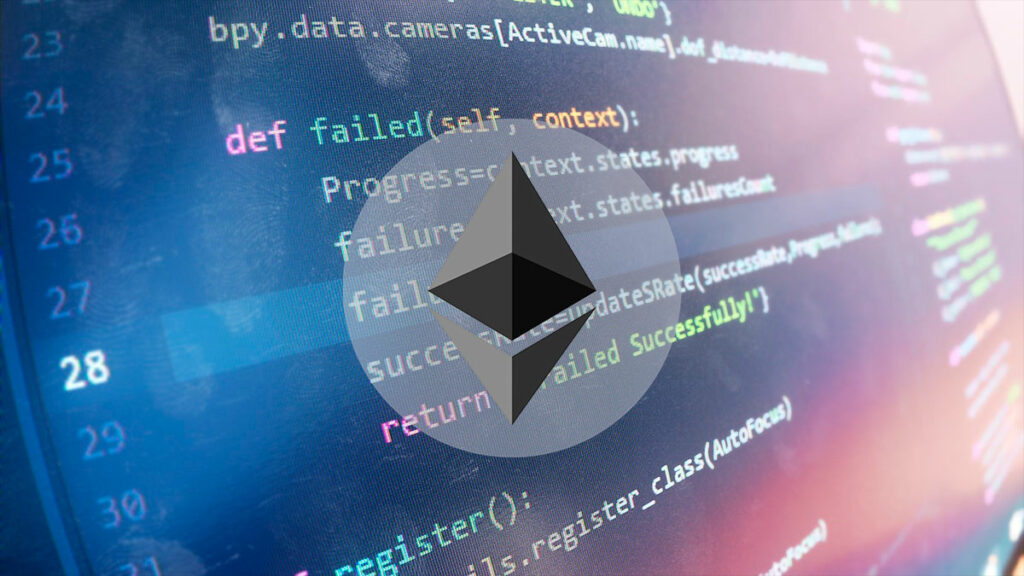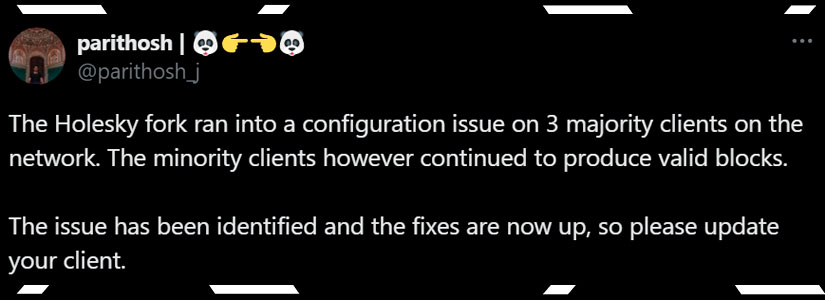TL;DR
- Testnet failure: Ethereum’s Pectra upgrade failed to finalize on Holesky testnet due to execution client bugs.
- Continued testing: The next phase of testing is scheduled for March 5 on the Sepolia testnet to resolve issues before mainnet deployment.
- Key improvements: The Pectra upgrade includes 11 protocol improvements, with notable features EIP-7702 and EIP-7251 to enhance transaction capabilities and validator staking limits.
Ethereum‘s highly anticipated Pectra upgrade encountered a significant setback when it failed to finalize the Holesky testnet. The test, activated at 4:55 PM ET, revealed critical issues that prevented the network from achieving finality.
Finality is a crucial concept in Ethereum, ensuring that transactions become irreversible after approximately 13 minutes. The failure to achieve finality has raised concerns about the stability and readiness of the Pectra upgrade for mainnet deployment.
Identifying the Issue
The primary cause of the testnet failure was traced to execution client bugs. These bugs were related to how deposit contract addresses were handled by some clients, leading to network instability.
Georgios Konstantopoulos, CTO of Paradigm, highlighted that the bug was isolated to execution clients who “forgot to add the correct deposit contract address.”
Joshua Cheong from Mantle Network further explained that the issue centered on the handling of deposit contract addresses, which disrupted critical hash verifications needed for withdrawals and deposits.

Continued Testing
Despite the setback, Ethereum developers remain committed to the testing process. The Ethereum Foundation has scheduled the next phase of testing on the Sepolia testnet for March 5.
This phase will be crucial in identifying and resolving any remaining issues before the Pectra upgrade can be deployed on the mainnet. The developers emphasize that finding such bugs is precisely why testnets exist, providing a safe environment to discover and fix issues before they impact the main Ethereum network.
Key Improvements
The Pectra upgrade includes 11 crucial protocol improvements, with the headline feature being EIP-7702. This proposal, drafted by Ethereum co-founder Vitalik Buterin, allows wallets to temporarily act as smart contracts during transactions, enabling features like batch operations and gas fee sponsorships without permanent changes to accounts.
Another significant change is EIP-7251, which increases the validator staking limit from 32 to 2,048 ETH, potentially transforming how large institutions interact with the Ethereum network.
The failure of the Pectra upgrade to finalize on the Holesky testnet underscores the complexities involved in upgrading a massive network like Ethereum. However, the continued commitment to testing and resolving issues before mainnet deployment highlights the developers’ dedication to ensuring a stable and robust upgrade.











